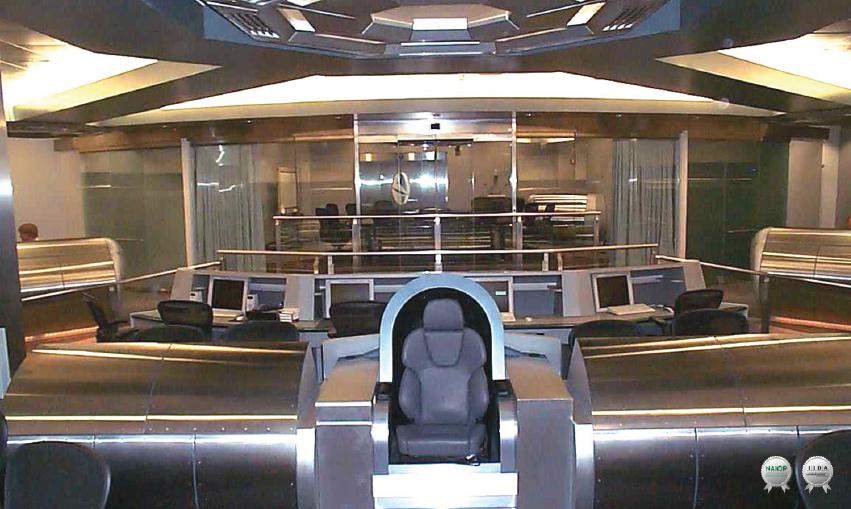Back in the late 1990s, the U.S. Army’s Intelligence and Security Command established an “Information Dominance Center” to help monitor the Internet and defend against cyber attacks. But the center was not designed to look like any ordinary government office—it was built to look like the bridge of the Starship Enterprise from Star Trek.
Details about the Information Dominance Center’s weird science-fiction-inspired design have been receiving much attention this week, following a Foreign Policy profile of NSA chief Gen. Keith Alexander. Before he got the job as NSA chief in 2005, Alexander worked for a period as commanding general of the Intelligence and Security Command. In the profile, Foreign Policy’s Shane Harris (who is also a Future Tense fellow at the New America Foundation) writes:
When he was running the Army’s Intelligence and Security Command, Alexander brought many of his future allies down to Fort Belvoir for a tour of his base of operations, a facility known as the Information Dominance Center. It had been designed by a Hollywood set designer to mimic the bridge of the starship Enterprise from Star Trek, complete with chrome panels, computer stations, a huge TV monitor on the forward wall, and doors that made a ‘whoosh’ sound when they slid open and closed. Lawmakers and other important officials took turns sitting in a leather ‘captain’s chair’ in the center of the room and watched as Alexander, a lover of science-fiction movies, showed off his data tools on the big screen.
Several news outlets have picked up on this, reporting inaccurately that the bizarre design was the brainchild of Alexander himself. In fact, the Information Dominance Center, which is located in Fort Belvoir, Va., was built between 1998 and 1999, at least two years before Alexander took charge. Maj. Gen. John Thomas was chief of Intelligence and Security Command until 1999, and he was replaced the same year by Maj. Gen. Robert Noonan. Alexander did not take the helm of the Star Trek-style spy lair until 2001, after it was up and running. While it was being built he was working about 900 miles away, in a separate role as chief of intelligence at United States Central Command in Florida.
The center was apparently designed by DBI Architects, a Washington, D.C.-based firm, in conjunction with at least five other companies. DBI’s Jennifer Klein received accolades for the futuristic creation, according to her LinkedIn profile, winning the International Interior Design Association’s Gold Design Award in 2000. DBI has currently taken its website down due to the high volumes of traffic it has been receiving, but a document on the company’s website, mirrored at Cryptome, shows photos of the center. The document also has Klein describing the aim of her design as being “to enable 24-hour worldwide visualization, planning, and execution of coordinated information operations for the U.S. Army and other federal agencies. The futuristic, yet distinctly military, setting is further reinforced by the Commander’s console, which gives the illusion that one has boarded a star ship.”
The center was featured in an ABC News special report in 2000, in which its network surveillance capabilities were shown off. One Army official boasted on the ABC segment that the center had the capability to “focus on Osama Bin Laden’s bank accounts,” and it is shown to be using a software tool called Starlight, which is a sophisticated visualization tool that allows analysts to view links between disparate pieces of information in large datasets.
It is unclear, however, whether the surveillance lair still has the same sci-fi layout. In October 2003, the Army put out a contract worth between $50 million and $100 million to renovate the center and increase its “sensitive compartmented information facility” space by 233,000 square feet. Designers were asked to come up with a plan that would encompass everything from provisions to electronically process and store classified information to a “wellness room and showers, and cafeteria.” Perhaps Army bosses decided to upgrade from the Starship Enterprise to the Millennium Falcon. All at the taxpayers’ expense, of course.
